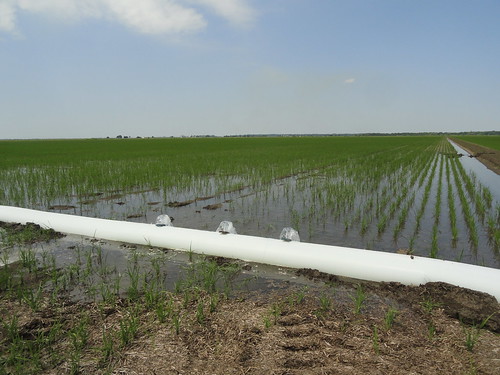
Imagine a rice farmer in Arkansas altering his water management techniques to deliver water more efficiently and use fewer days of flooding, allowing for more precise water and nutrient management while maintaining consistent yields. After a decision by the California Air Resources Board (CARB), in addition to improving water quality and reducing water use and nutrient input costs, that Arkansas farmer now has the option of selling carbon credits to large regulated emitters in California.
In 2012, California put in place a cap-and-trade program for greenhouse gas emissions, one of the most aggressive climate change programs in the world. Last week’s groundbreaking vote by CARB adopted the first crop-based agricultural offset protocol, designed to reduce methane and nitrous oxide emissions from rice production. Methane and nitrous oxide are potent greenhouse gases emitted through the cultivation and fertilization of rice fields.
“This partnership is blazing a trail for rice growers throughout the country to benefit from the power of environmental markets and diversify their on-farm income by implementing climate-smart conservation practices,” said Robert Bonnie, USDA’s Under Secretary for Natural Resources and Environment.
Rice growers in the United States who voluntarily implement conservation practices that reduce greenhouse gas emissions can now have those emissions quantified, third-party verified, and ultimately sold as carbon credits into California’s regulatory market.

This multi-year effort was accomplished with the financial support of a 2011 Natural Resources Conservation Service (NRCS) Conservation Innovation Grant and through the determination of a team led by Environmental Defense Fund, with help from the American Carbon Registry, Terra Global Capital, California Rice Commission, the White River Irrigation District, and numerous rice growers in California, Arkansas, Mississippi, and Louisiana.
The conservation techniques implemented by rice farmers to reduce greenhouse gas emissions—dry seeding, precise water management, and nutrient management—also have multiple co-benefits, including more efficient use of water, reduced offsite water quality issues, precise nitrogen fertilizer use, maintained yields, and protection of migratory bird habitat.
“Our Conservation Innovation Grants program has yielded a number of successful greenhouse gas reduction projects that allow farmers and ranchers to benefit while maintaining yields and addressing a changing climate,” said NRCS Chief Jason Weller. “These projects are true partnership triumphs, all for the benefit of agricultural producers and our Nation’s natural resources.”




